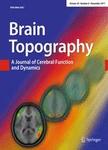版权所有:内蒙古大学图书馆 技术提供:维普资讯• 智图
内蒙古自治区呼和浩特市赛罕区大学西街235号 邮编: 010021

作者机构:Department of Electrical Engineering and Computer Science and Department of Bioengineering (M/C 154) The University of Illinois at Chicago Chicago 60680 Illinois Box 4348 United States
出 版 物:《Brain Topography》 (Brain Topogr)
年 卷 期:1991年第3卷第4期
页 面:407-423页
学科分类:0710[理学-生物学] 1002[医学-临床医学] 1001[医学-基础医学(可授医学、理学学位)] 07[理学] 1010[医学-医学技术(可授医学、理学学位)] 0703[理学-化学] 1009[医学-特种医学] 0702[理学-物理学] 071003[理学-生理学]
主 题:Decomposition Evoked potentials Principal components Spatiotemporal analysis Topographic components
摘 要:We describe a substantive application of the trilinear topographic components /parallel factors model (TC/PARAFAC, due to Möcks/Harshman) to the decomposition of multichannel evoked potentials (MEP s). We provide practical guidelines and procedures for applying PARAFAC methodology to MEP decomposition. Specifically, we apply techniques of data preprocessing, orthogonality constraints, and validation of solutions in a complete TC analysis, for the first time using actual MEP data. The TC model is shown to be superior to the traditional bilinear principal components model in terms of data reduction, confirming the advantage of the TC model s added assumptions. The model is then shown to provide a unique spatiotemporal decomposition that is reproducible in different subject groups. The components are shown to be consistent with spatial/temporal features evident in the data, except for an artificial component resulting from latency jitter. Subject scores on this component are shown to reflect peak latencies in the data, suggesting a new aspect to statistical analyses based on subject scores. In general, the results support the conclusion that the TC model is a promising alternative to principal components for data reduction and analysis of MEP s. © 1991 Human Sciences Press, Inc.